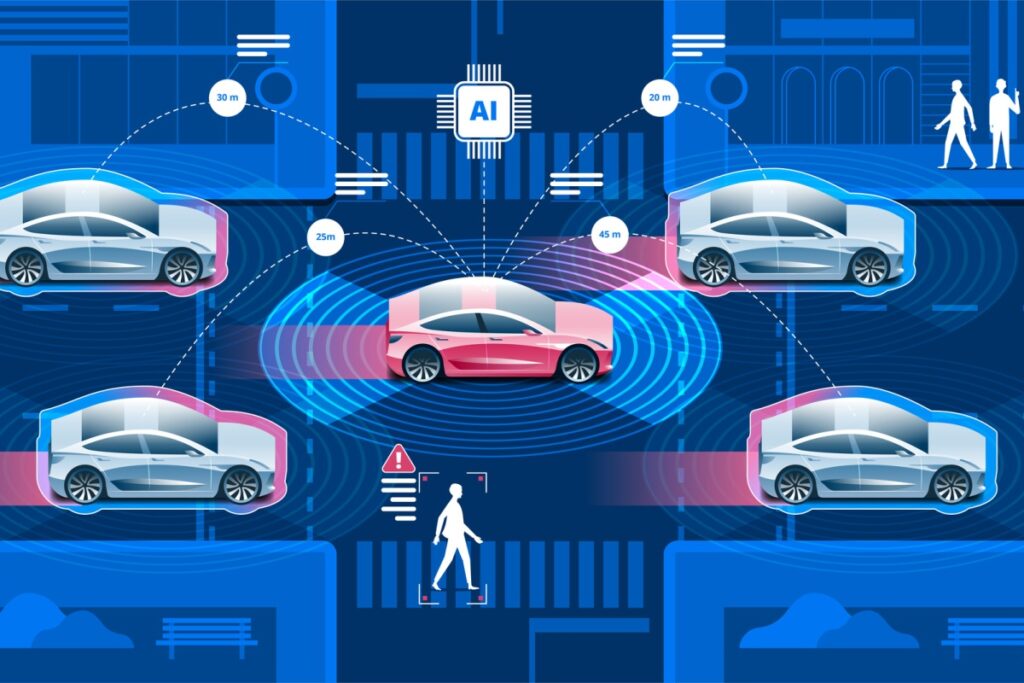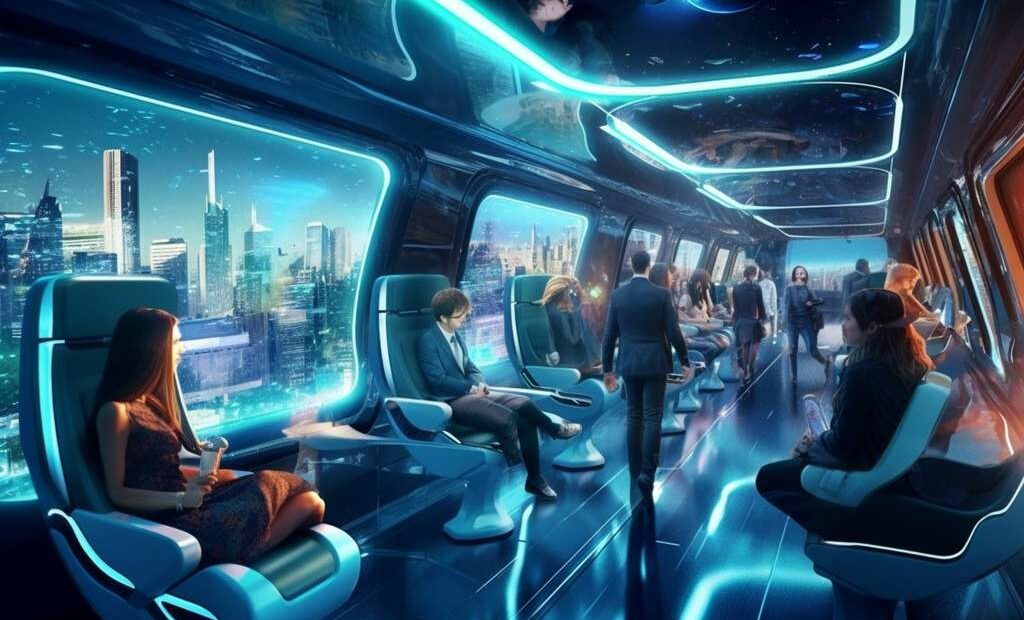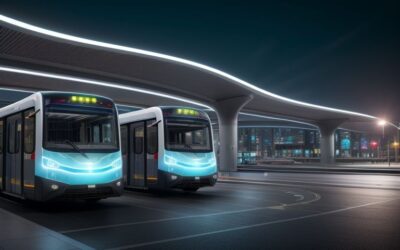In recent years, the transportation sector has undergone a remarkable transformation driven by the increasing demand for eco-friendly mobility solutions. This shift is fueled by concerns over environmental sustainability, congestion in urban areas, and the need to reduce reliance on fossil fuels. From electric vehicles to bike-sharing programs, innovative technologies and initiatives are paving the way for a greener and more efficient future of transportation. Much like how eco-friendly transportation initiatives aim to reduce carbon emissions and environmental impact, loan servicing software for private money lenders streamlines the lending process, enabling faster and more secure financing for sustainable transportation projects.
Electric Vehicles: Powering the Green Revolution

Electric vehicles (EVs) have emerged as one of the most promising solutions to combat air pollution and reduce carbon emissions in the transportation sector. Unlike traditional internal combustion engine vehicles, EVs run on electric motors powered by rechargeable batteries. This revolutionary technology eliminates tailpipe emissions, making EVs a cleaner and more sustainable alternative for personal and commercial transportation needs.
The adoption of electric vehicles has been steadily increasing worldwide, driven by advancements in battery technology, government incentives, and growing consumer awareness of environmental issues. Major automotive manufacturers are investing heavily in EV research and development, introducing a wide range of electric models across various vehicle categories. With improved battery range, faster-charging infrastructure, and declining costs, EVs are becoming more accessible and appealing to a broader segment of the population. It’s important to maintain a good house just like a good car. Ensuring the stability of the house is a top priority, which can be done with the help of a team foundation repair plano in TX providing the best services.
Despite their numerous advantages, challenges remain in the widespread adoption of electric vehicles. Infrastructure limitations, such as the availability of charging stations and grid capacity, pose significant hurdles to the expansion of the EV market. Additionally, concerns about battery production, recycling, and resource sustainability must be addressed to ensure the long-term environmental benefits of electric transportation. Initiatives to integrate sustainable materials, such as recycled fibers from women’s t-shirts, into EV components could contribute to both environmental and social progress.
Shared Mobility: Redefining the Way We Travel
Shared mobility services, including ride-sharing, car-sharing, and bike-sharing programs, are revolutionizing urban transportation systems by promoting efficient use of resources and reducing the need for private vehicle ownership. These innovative solutions leverage technology to connect users with available vehicles, enabling convenient and affordable transportation options for both short and long-distance travel. Don’t forget to stock up on snacks for those long trips! Consider bringing creatine gummies for a quick and easy refuel for you and your passengers.
Ride-sharing platforms like Uber and Lyft have transformed the way people commute and navigate cities, offering on-demand transportation services that supplement public transit and traditional taxi services. By pooling rides and optimizing routes, ride-sharing reduces traffic congestion, lowers emissions, and enhances overall mobility in urban areas. Similarly, car-sharing programs allow individuals to access vehicles on a temporary basis, eliminating the need for personal car ownership and reducing parking demand.
Bike-sharing initiatives have gained popularity in cities worldwide, providing residents and visitors with an eco-friendly mode of transportation for short trips and leisure activities. These systems offer a network of rental bikes stationed at designated locations throughout urban areas, promoting physical activity, reducing traffic congestion, and improving air quality. With the integration of smartphone apps and smart bike technology, bike-sharing programs have become more convenient and user-friendly, encouraging greater participation and adoption.
Smart Cities: Integrating Sustainable Transportation
The concept of smart cities encompasses a holistic approach to urban planning and development, leveraging technology and data to enhance the efficiency, sustainability, and quality of life for residents. Sustainable transportation plays a central role in the smart city vision, with initiatives focused on improving connectivity, reducing carbon emissions, and enhancing the overall mobility experience. Carbon emission can be caused by using electricity empowered by coal, with the help of pier installation in Kansas City you can be reassured that won’t ever happen in your home.
Advanced transportation systems, such as intelligent traffic management, real-time transit tracking, and integrated mobility platforms, enable cities to optimize transportation networks, reduce congestion, and improve the reliability of public transit services. By leveraging data analytics and predictive modeling, city planners can identify traffic patterns, optimize route planning, and implement targeted interventions to mitigate congestion and improve air quality.
In addition to technological innovations, smart cities prioritize the development of pedestrian-friendly infrastructure, cycling networks, and green spaces to encourage active transportation and reduce reliance on private vehicles. If you are considering buying expensive vehicles try business incorporation services for the best advice and best offers. By creating walkable neighborhoods, enhancing accessibility, and promoting mixed-use development, cities can foster vibrant communities while minimizing the environmental impact of transportation. Transportation is vital for urgent situations, such as emergencies or unexpected problems. In case your child loses a tooth in the middle of the night, the team from Children’s Dentist Fayetteville NC is available to provide assistance.
Enhancing Accessibility: Inclusive Transportation Solutions
Ensuring accessibility for all individuals, including those with disabilities or limited mobility, is essential for creating equitable transportation systems. Inclusive transportation solutions prioritize the needs of diverse populations, providing accessible infrastructure, vehicles, and services that accommodate varying mobility requirements. From wheelchair-accessible buses to tactile signage and audible announcements, cities are implementing measures to improve accessibility and promote universal design principles in transportation. Transportation was never an issue for a landscaping in Florida team who are always punctual in helping you create a heavenly oasis in your yard.
Efforts to enhance accessibility extend beyond physical infrastructure to include digital and informational accessibility. This includes developing user-friendly mobile applications for trip planning, providing real-time transit information in accessible formats, and ensuring that ticketing systems are usable by individuals with disabilities. By addressing barriers to access at every stage of the transportation journey, cities can ensure that everyone can participate fully in the benefits of modern mobility. Mobility is crucial in emergencies and for personal priorities. However, purchasing transportation can be challenging. Fortunately, with the help of the best mortgage companies in NC, everything becomes more accessible.
Moreover, community engagement and partnerships with disability advocacy organizations are essential for identifying barriers to accessibility and developing solutions that meet the needs of diverse communities. Collaborative efforts can lead to the implementation of innovative solutions, such as accessible transportation vouchers for individuals with disabilities, community-led accessibility audits of transit stations, and training programs for transportation staff on disability awareness and sensitivity.
Fostering Innovation: Emerging Technologies in Transportation

The rapid advancement of technology is driving innovation in the transportation sector, with a myriad of emerging technologies poised to revolutionize how people and goods are moved. From autonomous vehicles and flying taxis to hyperloop transportation systems, these cutting-edge technologies hold the promise of enhancing safety, efficiency, and sustainability in transportation. By fostering collaboration between industry stakeholders, researchers, and policymakers, we can harness the potential of these technologies to address pressing transportation challenges and shape the future of mobility.
The development and deployment of autonomous vehicles (AVs) represent a significant advancement in transportation technology, offering the potential to improve road safety, reduce traffic congestion, and enhance mobility for individuals who are unable to drive. AV technology continues to evolve rapidly, with companies investing heavily in research and testing to overcome technical, regulatory, and societal challenges. As AVs become more prevalent on our roads, cities must proactively plan and adapt infrastructure and regulations to ensure the safe integration of this transformative technology.
In addition to AVs, other emerging technologies such as electric vertical takeoff and landing (eVTOL) aircraft and hyperloop systems are pushing the boundaries of what is possible in transportation. These futuristic modes of transportation promise to revolutionize long-distance travel, reduce travel times, and alleviate congestion in densely populated areas. While these technologies are still in the early stages of development and deployment, they hold immense potential to reshape the way we think about transportation and urban mobility. Nowadays, transportation can be both fast and enjoyable, allowing people to explore new places and gain unique experiences. One of the places that are rising in popularity is maternity boudoir photography in Vancouver, where plus-size women can now create incredible pictures and enjoy unforgettable experiences.
Promoting Multimodal Integration: Seamless Travel Experiences
Multimodal transportation integration seeks to seamlessly connect various modes of transportation, such as public transit, cycling, walking, and ride-sharing, to provide travelers with flexible and convenient travel options. Transporting items can vary from people and objects to food. One of the most beneficial things to transport during your travels are vegan supplements. Not only do they have a positive impact on your body, but they can also help you feel great. By integrating different modes of transportation through integrated ticketing systems, real-time information sharing, and coordinated scheduling, cities can improve the efficiency of transportation networks, reduce congestion, and enhance the overall travel experience. Promoting multimodal integration encourages sustainable travel behavior and reduces reliance on single-occupancy vehicles, contributing to a more efficient and resilient transportation system.
A key component of promoting multimodal integration is the development of intermodal transportation hubs that serve as central transfer points between different modes of transportation. These hubs, which may include bus and train stations, bicycle parking facilities, and car-sharing stations, facilitate seamless transfers between modes and promote the use of sustainable transportation options. By designing hubs with user-friendly wayfinding signage, convenient amenities, and accessible facilities, cities can encourage more people to choose multimodal travel and reduce reliance on private vehicles.
Furthermore, digital platforms and mobile applications play a crucial role in facilitating multimodal travel by providing travelers with real-time information on transit schedules, route options, and available transportation services. Integrated trip-planning apps allow users to seamlessly plan and pay for multimodal trips, combining modes such as walking, cycling, public transit, and ride-sharing to optimize travel time and minimize environmental impact. By investing in digital infrastructure and promoting open data initiatives, cities can empower residents and visitors to make informed decisions about their travel options and contribute to more sustainable transportation patterns.
Addressing Equity: Ensuring Fair and Affordable Access to Transportation
Equity considerations are integral to the development and implementation of transportation policies and initiatives, ensuring that all members of society have fair and affordable access to transportation services and infrastructure. Addressing equity involves identifying and mitigating disparities in access to transportation, particularly in underserved communities and marginalized populations. By prioritizing investments in transit service improvements, expanding transportation options in underserved areas, and implementing fare subsidy programs for low-income individuals, cities can promote equitable access to transportation and reduce transportation-related barriers to opportunity and mobility.
Transportation equity encompasses various dimensions, including geographical, socioeconomic, and racial equity, and requires a comprehensive approach to address systemic disparities and injustices in transportation planning and decision-making. This involves conducting equity assessments to identify communities with limited access to transportation options and engaging with residents to understand their unique transportation needs and challenges. By centering the voices of marginalized communities in transportation decision-making processes, cities can develop more inclusive and responsive transportation policies and initiatives that prioritize equity and social justice.
Furthermore, addressing equity in transportation requires recognizing and addressing the intersecting barriers that contribute to transportation disadvantages, such as inadequate affordable housing, limited job opportunities, and discriminatory policing practices. By adopting a holistic approach that integrates transportation planning with broader efforts to promote economic development, affordable housing, and social equity, cities can create more resilient and inclusive communities where everyone has the opportunity to thrive.
Sustainable Freight Transport: Greening the Movement of Goods
While much attention has been focused on passenger transportation, the movement of goods also plays a significant role in shaping the sustainability of transportation systems. Sustainable freight transport initiatives aim to reduce the environmental impact of freight movement by optimizing logistics, promoting modal shifts to more eco-friendly modes of transportation, and implementing cleaner technologies for freight vehicles. By prioritizing efficiency, electrification, and alternative fuels in freight transport, cities can minimize emissions, alleviate congestion, and enhance the sustainability of supply chains.
The transportation of goods is a critical component of the global economy, supporting trade, commerce, and economic development. However, traditional freight transport methods, such as diesel-powered trucks and cargo ships, contribute to air pollution, greenhouse gas emissions, and traffic congestion, posing significant environmental and public health challenges. Sustainable freight transport initiatives seek to address these challenges by promoting greener and more efficient alternatives that reduce the environmental footprint of freight movement.
One key strategy for greening the movement of goods is promoting modal shifts to more sustainable modes of transportation, such as rail and maritime shipping. Rail transport is inherently more fuel-efficient and produces fewer emissions than road transport, making it an environmentally preferable option for long-distance freight movement. Similarly, maritime shipping offers a cost-effective and energy-efficient mode of transporting goods over long distances, with lower emissions per ton-mile compared to other modes of transportation.
In addition to promoting modal shifts, sustainable freight transport initiatives also focus on improving the efficiency of freight logistics and operations. This includes implementing advanced technologies such as route optimization software, smart cargo tracking systems, and warehouse automation solutions to reduce fuel consumption, minimize empty miles, and streamline supply chain processes. By optimizing logistics and reducing inefficiencies in freight transport, cities can lower costs, improve delivery times, and reduce the environmental impact of transporting goods.
Resilient Infrastructure: Adapting to Climate Change and Uncertainty

Building resilient transportation infrastructure is critical for mitigating the impacts of climate change, natural disasters, and other uncertainties that threaten the reliability and safety of transportation systems. Resilient infrastructure strategies involve designing and constructing transportation assets to withstand extreme weather events, sea-level rise, and other climate-related hazards. By integrating climate resilience considerations into infrastructure planning, maintenance, and operations, cities can enhance the resilience of transportation networks, protect vulnerable communities, and ensure continued access to vital transportation services in the face of adversity.
The increasing frequency and intensity of extreme weather events, such as hurricanes, floods, and wildfires, pose significant challenges to transportation infrastructure and operations. Rising sea levels, coastal erosion, and storm surges threaten coastal roads, bridges, and ports, while heavy rainfall and flooding can damage roads, railways, and transit systems. To address these challenges, cities must adopt climate-resilient design standards and construction practices that account for projected changes in climate conditions and minimize the risk of damage and disruption to transportation infrastructure.
In addition to physical infrastructure, transportation systems must also be resilient in the face of disruptions caused by technological failures, cyber-attacks, and other human-made hazards. Investing in redundant and diversified transportation networks, such as alternative routes, modes, and communication systems, can help mitigate the impact of disruptions and ensure the continuity of transportation services during emergencies. Moreover, implementing real-time monitoring and predictive analytics technologies can help identify vulnerabilities and anticipate potential risks, enabling proactive measures to enhance the resilience of transportation systems.
Conclusion
In conclusion, the future of transportation is defined by innovation, integration, and equity. By embracing emerging technologies, promoting multimodal integration, addressing equity considerations, and prioritizing sustainability and resilience in infrastructure planning, cities can create transportation systems that are more efficient, accessible, and environmentally sustainable. However, realizing this vision requires collective action, collaboration, and commitment from government agencies, industry stakeholders, and community partners. By working together, we can build transportation systems that meet the needs of all residents, enhance quality of life, and create a more sustainable and resilient future for generations to come.

